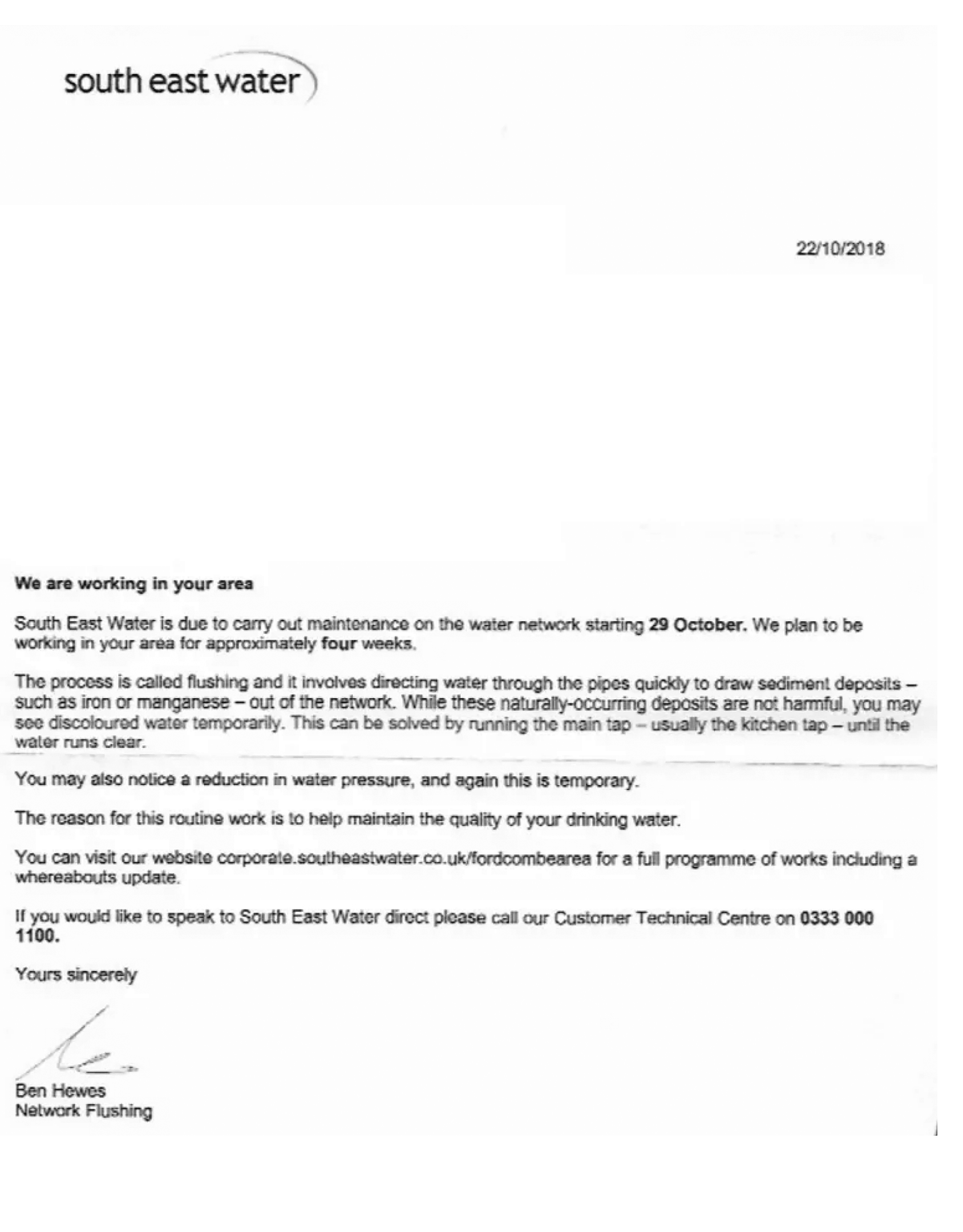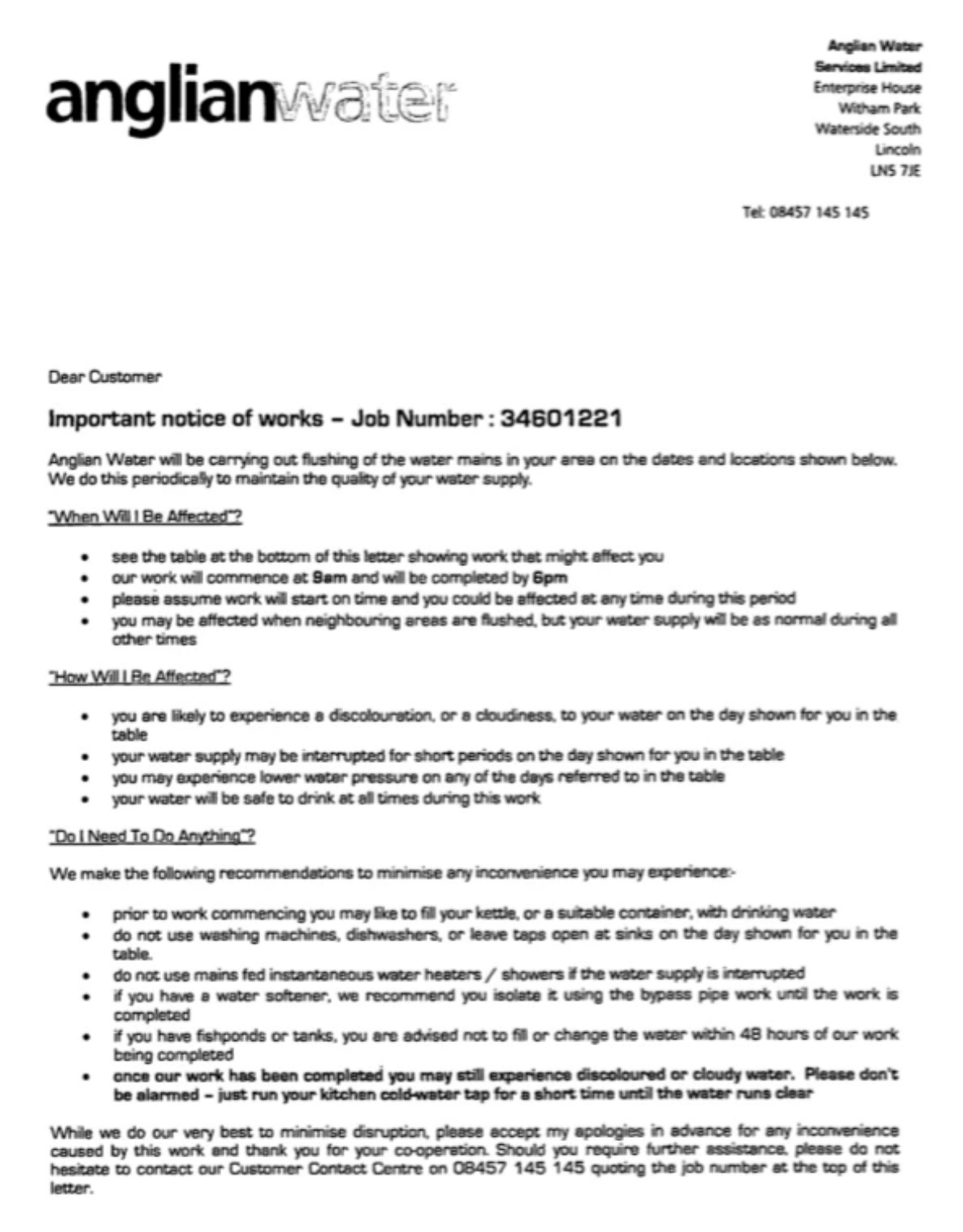What is chlorine contamination?
Here we explain what chlorine contamination is, and how it occurs followed by what chlorine contamination actually looks like.
What causes chlorine contamination?
When was chlorine contamination first identified?
The attack of chlorine on water softening resin has been affecting every manufacturer selling into the UK market for many years, and while it took initially some time for the industry to figure out why so many softeners being damaged, around 2008 the problem was eventually identified, and the suspected cause identified.
Identifying the cause and understanding it was, however, two totally different things. Resin manufacturers blamed excess chlorine in the water supplies, but water authorities denied they were excessively dosing chlorine. So who was right?
Another question that needed to be understood was why was there an increasing amount of chlorine in the water supply, as previously this hadn't been an issue.
Why is there chlorine in the water supply?
It was eventually understood that our water infrastructure was ageing, and increasingly new additions to water mains or repairs were being done. Typically, water mains are flushed with chlorine when:
- New homes are built and new water mains are connected to existing mains
- Older and often Victorian water mains are upgraded
- New or replacement water meters are fitted
- Water mains are routinely chlorinated as part of a safe maintenance schedule
After each of these events, pipes are chlorinated to kill off any bugs (bacteria) and ensure the water supply is safe for consumption or is ‘potable’ (drinkable).
So why was chlorine beginning to damage water softeners?
This was the harder question to answer, and more importantly to prove. Initially, the British water softener manufacturer, Harvey Softeners, contacted water authorities to request details on how chlorine was dosed into water mains. No water authority gave a helpful answer, and so Harvey Softeners contacted many of them again and asked if they could observe the mains being chlorinated in a typical street. Every water authority that was contacted refused this request. As a result, the mystery went on.
In approximately late 2009, there was a breakthrough when the owner of a Suffolk based local water softener business happened to see the chlorination process happen, and reported back that the water main had been dosed with chlorine without being measured. Bingo. Unfortunately, however, the water authority employee may have realised he had been caught red-handed and denied doing what had been observed. Either way, this was reported back to Harveys, who shared the information across the industry through the representative trading body with the intention of at last helping the industry find a solution.
How much chlorine is too much?
This is a very good question. Firstly, we now know that elevated levels of chlorine in excess of 2 mg/L can have an effect on certain types of resin used in water softeners.
Resin suitability
We also now know that earlier resins were not very chlorine tolerant.
Additionally, even today, many of the cheaper resins found in lower-priced softeners are still not very chlorine tolerant. In fact, it is frequently felt that the resin is the most important component of a water softener, and some better quality resins cost as much for the resin itself as cheaper softeners sell for the whole machine. Typically, this can be the case in some softeners imported from other countries where manufacturing for the cheapest possible price is the most important thing.
Chlorine dosing
Nowadays, as water authorities receive more contact about chlorine contamination of their softeners from the public, chlorine dosing reporting has become more open. ‘Normal’ day-to-day levels of chlorine in the water supply, along with the correct dosing at treatment points does not typically damage water softeners on their own.
In a typical road, there may be several water softeners fitted, but only 1 or 2 may become affected. What determines if one is damaged is normally down to if the water softener was softening the water at the time that the water mains had been reconnected with freshly chlorinated water, thus drawing the chlorine at a higher dosage through the softener at that time.
However, there is a caveat to the above statement: Better understanding of this issue has meant that the premium brands and models now have resins that are more chlorine tolerant. These softeners are less likely to be affected by chlorine contamination in the future, but this cannot be guaranteed. One manufacturer, Harveys, however, has moved to a resin in their Minimax softeners that is so tolerant of chlorine that they are now the only manufacturer to give a 10-year guarantee on the resin.
So, the next question that arises is, "Can highly chlorine tolerant resins used in premium softeners today still become damaged by chlorine?". The answer to that is a possible yes and the reason why is relatively easy to surmise. If pipework is chlorinated, say due to a burst water main, and subsequently chlorinated once the main is fixed, and very soon thereafter the pipework is chlorinated again as part of planned routine maintenance, it could be suggested that the two doses of chlorine so close together could create an excess that, while below safe levels and within guidelines, can leave residual chlorine in the softener that could go on to damage the resin. One other possibility could be that dosing guidelines were not followed or properly documented, although nowadays hopefully that is less likely to occur.
How to protect against chlorine contamination
What should a customer affected by chlorine contamination do?
Increasingly, it is felt in the softening industry that local water authorities are doing the right thing, although, from water authority points of view, they have always done the right thing. We have unfortunately never encountered a water authority, anywhere in the country, who has accepted liability for chlorine contamination, but all around the hard water areas of the country, householders report softeners breaking down within days, weeks and months of water mains work being completed.
Chlorine contamination doesn't normally just happen after a single incident, but the damage builds up over time. Pipework dosed one week would see the chlorine go through the softener but might not be until several weeks or months later that the effects become apparent. This is because it takes time for the chlorine to break through the hard outer casing of the resin.
Interestingly, we have seen many water companies now begin to advise householders before they start roadworks that they should bypass any water softeners fitted until after all water mains repair/replacement works are complete, suggesting they have recognised this as the cause of the problem. We have also heard from many customers that the water authority engineers working in the streets have made the connection when questioned, but of course, no one will put it in writing.
The intensity of chlorine attack can sometimes be noticed more by houses closer to water treatment works or road works than those further away because, as I understand it, the houses furthest away from the treatment but on the same run of pipework, must receive the minimum required dose of treatment, which means that those closest receive a greater dose. This consequently makes the whole understanding of the situation more complex. Because this is such a complicated problem to understand, I have tried to clarify this on the following page: Where does our hard water come from?
What effect does chlorine contamination have on water softeners?
The key component in a water softener that softens the water and removed calcium is the fine beads of the resin contained within the two vessels in your softener.
The beads are round like marbles and are less than ½mm in diameter and just as hard as a marble. A softener will have literally tens of millions of resin beads contained within one or two cylinders. In their usual state, the resin beads maintain their hard structure by a tiny net-like structure around each bead, referred to as ‘cross-linking’. It is this ‘net’ around the bead that catches the chalk in the water. The resin can often outlive the life of the plastic components of the softener unless attacked by chlorine.
As excess amounts of chlorine enter the water softener, they attack the cross-linking around the resin bead, stripping it away. This causes the bead to lose its rigidity and expand into an almost jelly-like substance, slowing down water flow rates, and in some older softeners, breaking through the resin vessel screens, resulting in resin making its way through the home.
You would generally see this as brown bits that look like golden or red coloured sand coming out of taps, showers, or clogging washing filters and boiler filters. You may even see the resin buildup in loft tanks. These are always more complicated circumstances, and often will require a professional plumber to resolve.
There is no cure for chlorine contamination once it starts. The only thing you can do is to replace the resin and depending on how advanced the damage is, sometimes other components within the softener will also need replacing, or worse, the whole softener.
Depending on the softener make and model you have, chlorine contamination can cost anything from £150–£400 to repair, and as stated above, in some cases can entirely write off a softener.
What can be done to protect a new or repaired softener from a future further attack?
In May 2010, some of the industry moved to a much greater grade of chlorine tolerant resin, and while this has reduced capacity only very slightly, it does at least have a better chance of withstanding the damage chlorine can cause.
Some manufacturers, such as Harvey Water Softeners, with their Minimax Innova, Harveys Arc and TwinTec Cobalt now cover the resin cylinders of a new water softener for 10-years against chlorine contamination in recognition that resin failure is entirely out of customer's hands, and therefore they do not want customers to have to foot the parts repair costs of this in the future. A very responsible approach, in my view.
Other manufacturers, unfortunately, don't cover chlorine contamination, so if you have one of those softeners, it just means that your repair costs could be higher.
Actions you may wish to take up the matter with your local water board, and see if they can offer any further explanation and recompense. Sometimes you may also be able to take this up with your home insurer too. My experience of home insurers from what customers have told me is that the point of view is often that if the softener is over ten years of age, then that is a reasonable length of life, and a softener may therefore not be covered by insurance.
On the other hand, our experience is that quality water softeners can enjoy a life of between 25–30 years when cared for and well maintained.
How to spot the signs of the cause of chlorine contamination
If you see roadworks in your local area that involves the water mains surrounding your home or know that the water board are replacing water meters, then this is a sure-fire way of knowing that they will be flushing the mains with chlorine after the work is complete – I would recommend 48 hours to be on the safe side.
If you are notified about this type of local water main repair by letter like the following examples, then I would bypass your water softener until the repairs are completed. I would further recommend you leave your softener bypassed for a further 48 hours after the work is completed.







